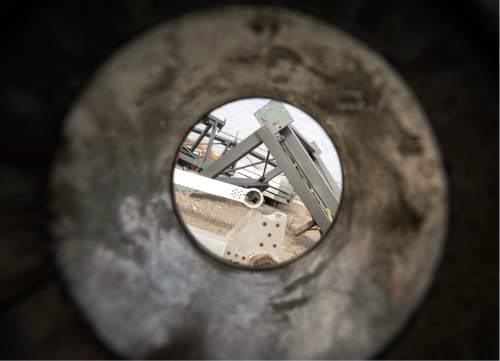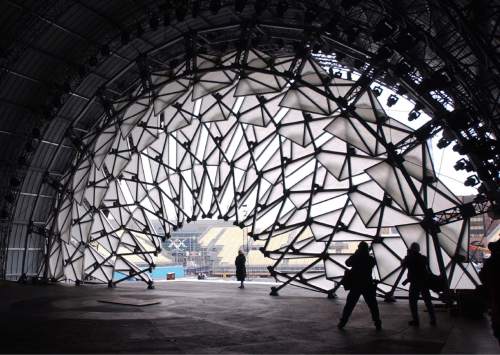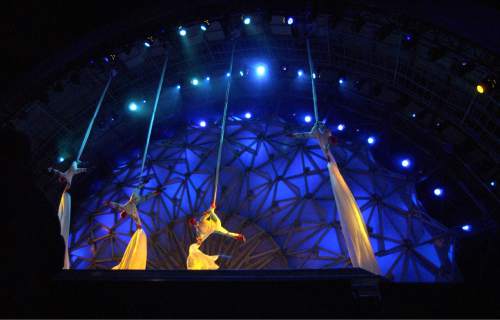This is an archived article that was published on sltrib.com in 2016, and information in the article may be outdated. It is provided only for personal research purposes and may not be reprinted.
Utahns love the Olympics, and watching the Rio Games can bring back fond memories of the 2002 Winter Games.
The Beehive State's Olympic legacies still provide thrills: Park City's Olympic Park with ski jumps and bobsled runs, Kearns' speedskating oval and Salt Lake City's Hoberman Arch.
Well, not exactly. Hoberman Arch — the dazzling 31,000-pound aluminum web that is 36 feet high and 72 feet wide and opens and closes like the iris of an eye — is nowhere to be seen.
The icon that took the spotlight when Salt Lake City hosted the world sits in pieces in a warehouse somewhere all but forgotten.
Two years ago this month, the arch was unceremoniously moved from its temporary location at the south end of the University of Utah's Rice-Eccles Stadium and dumped in pieces at a Salt Lake City impound lot at 2150 W. 500 South.
In December 2014, pieces of it were stolen — apparently for scrap — and the culprits never were found. The administration of former Mayor Ralph Becker then moved the remaining pieces of the arch to a secure, undisclosed location. And there it sits today.
Becker had said that his team was looking for a suitable home for the arch but few details emerged. No proposal was put before the City Council. Clearly the Hoberman Arch was not a top priority then.
It doesn't appear much has changed. Like her predecessor, Mayor Jackie Biskupski is studying what to do with the arch, according to spokesman Matthew Rojas.
The missing pieces are being "remanufactured," he explained. "We are committed to finding a place for the Hoberman Arch."
Details remain sketchy.
After Salt Lake City's Winter Games, the arch landed at the U. as a stopgap measure. It's temporary home there didn't allow it to be opened, leaving it much diminished from its heyday at medal ceremonies near South Temple and 200 West during the 2002 Games.
Former Mayor Rocky Anderson proposed putting the arch at Pioneer Park, but he was at loggerheads with City Council members, who wanted it on Gallivan Plaza. In the end, Fraser Bullock, who headed up finances for the Salt Lake Organizing Committee (SLOC), threw up his hands and got the U. to agree to take it on a temporary basis.
"It's an incredible betrayal of our community's interest having an iconic Olympic legacy, like the Hoberman Arch, sitting in hundreds of pieces in some secret location," Anderson said Friday. "This community deserves the Hoberman Arch be reconstructed as a reminder of the amazing 2002 Winter Games."
City Councilman Charlie Luke said the city should establish an Olympic park as a permanent home for the arch.
"The city needs to do a better job of creating a lasting legacy for the Games," he said. "As of now, Salt Lake City has nothing to show."
Luke agreed that the more time that passes, the less likely it is that Utahns will ever see the Hoberman Arch again.







